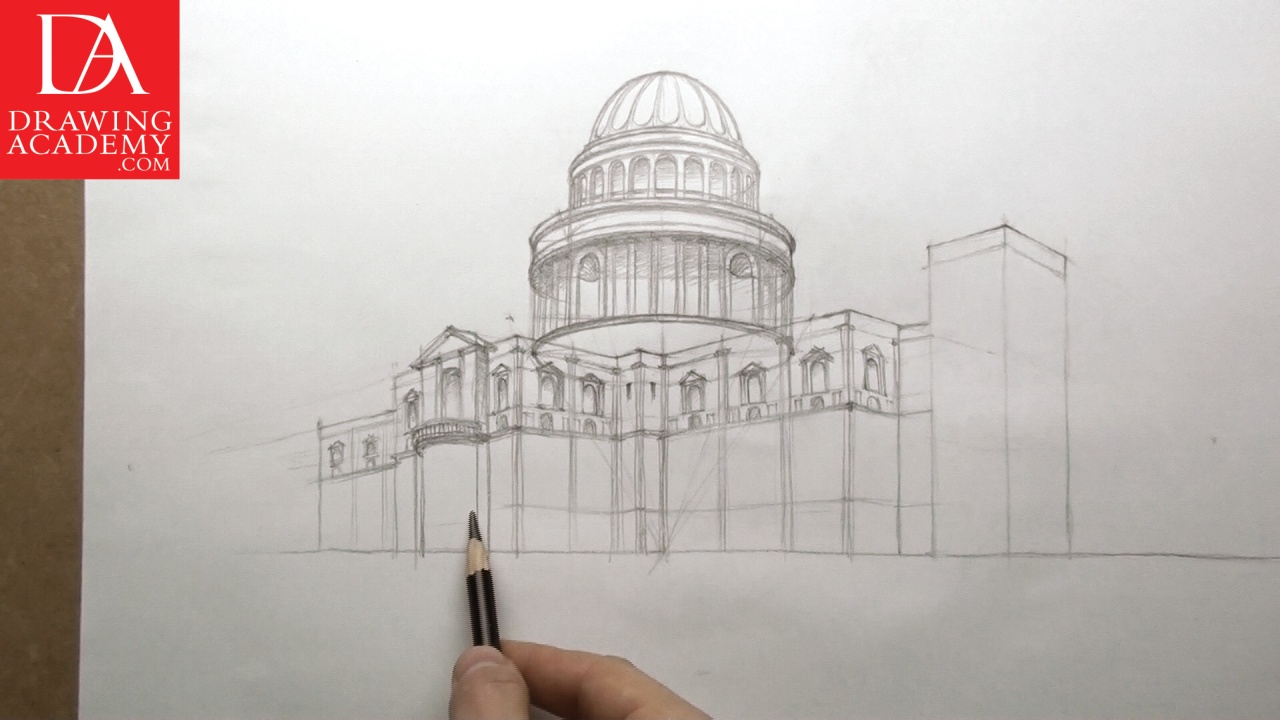Discover the Drawing Perspective Theory
In this video lesson about Drawing Perspective you will discover fundamental principles of Drawing Perspective.
Enroll in the Drawing Academy Course
Pay once - Enjoy forever!
Only $297
Drawing Perspective Theory
Drawing Perspective is what fine artists use to depict real three-dimensional world on a flat surface. In this particular lesson we are using the combination of two–point perspective for cathedral walls and windows, and one-point perspective for constructing galleries and the dome.
Depending on the subject and the point of view, there are many other variations of Drawing Perspective can be used. For example, for this drawing to be precise, we should use a four-point perspective. Two vanishing points would be located on the horizon line and two more points far above and far below the horizon line. We approximate all vertical lines to be completely vertical, although for a drawing with the photographic precision, vertical lines above the horizon should aim to the top vanishing point, and all lines below the horizon line should aim toward the bottom vanishing point.
Drawing Perspective – Horizon line
During this lesson I was using the words ‘the horizon line’ and ‘the eye level’ as interchangeable terms. It happens that a viewer’s eye level is located exactly at the height of the horizon. Should he viewer be positioned higher, let say go by an elevator up, the horizon level will also rise accordingly.

The early Renaissance architects and fine artists started to develop the rules of perspective in the 15th century. For next 500 years understanding of the perspective principles was deepening by mathematicians.
I have read an academic book giving really interesting insights into the subject of perspective written in the 20th century by a Russian researcher.
If you are creating realistic artworks, a knowledge and understanding of perspective is indispensable. For both monochrome graphic and multi-colour painting, the rules of perspective should be applied.
Linear perspective deals with the organisation of shapes in space. The rules of aerial perspective define how atmospheric effects influence the colours and contrast of foreground and background objects.
Great art starts with the well-built drawing, and use of Drawing Perspective is integral skill every fine artists needs.
Leonardo da Vinci about perspective
Here is what one of the greatest artists, Leonardo da Vinci, said about the perspective: “Perspective is to painting what the bridle is to the horse, the rudder to a ship… There are three aspects to perspective. The first has to do with how the size of objects seems to diminish according to distance: the second, the manner in which colours change the farther away they are from the eye; the third defines how objects ought to be finished less carefully the farther away they are.”




